"Fight to the last fighter." The defeat of the 1st German tank army near Rostov
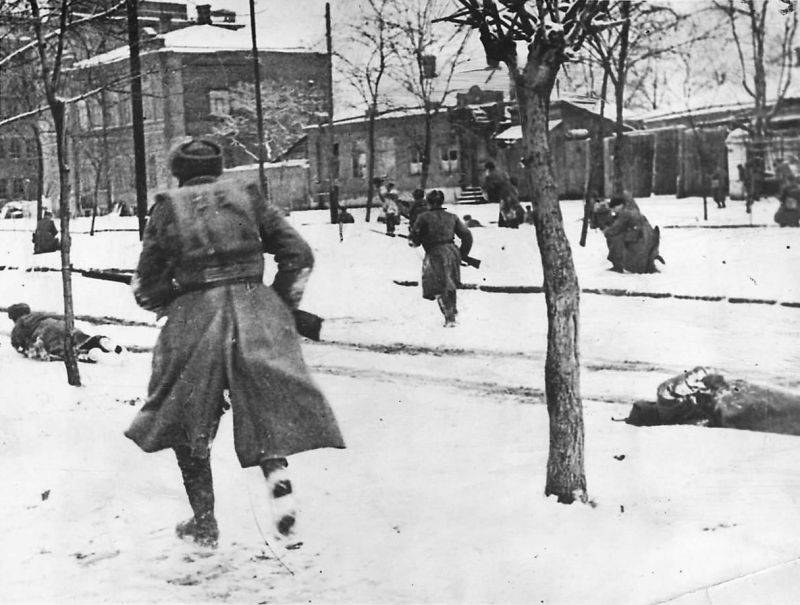
Red Army soldiers in street battles for the liberation of Rostov-on-Don. November 1941
Plans and forces of the parties
For an offensive in the Rostov direction, the German command deployed the 1st tank Kleist's army, consisting of two motorized corps and one army corps, an Italian mobile corps. They included German: 3 tank, 3 motorized, 1 infantry, 2 mountain rifle divisions, 3 Italian and one Slovak motorized divisions. The Germans at that time had complete air supremacy in this sector of the front.
The German Headquarters strove to seize the Caucasus with its oil resources as soon as possible. Therefore, the 1st Tank Army, after reaching Taganrog (Battle of the Sea of Azov) received the task of destroying the Soviet grouping in the Rostov direction, seizing a bridgehead between Rostov and Tsimlyanskaya. Then develop an offensive to the south, capture Maykop and Tuapse. In the spring of 1942, the Nazis planned to occupy the entire Caucasus, reaching the borders of Persia.
The command of Army Group South, in order to avoid heavy fighting on the outskirts of Rostov, where the Russians were clearly expecting an attack, planned to deliver the main blow to Shakhty - Novocherkassk. Break through the front, carry out deep coverage from the northeast, encircle and destroy the main forces of the Southern Front (SF) in the region of Rostov-on-Don, then calmly advance deep into the Caucasus. Part of the forces of the 1st Panzer Army were going to turn north in order to, together with the 17th Army, advancing in the Voroshilovgrad direction, destroy the Soviet forces in the eastern part of Donbass. A massive blow from mobile units was supposed to easily break the enemy's defenses.
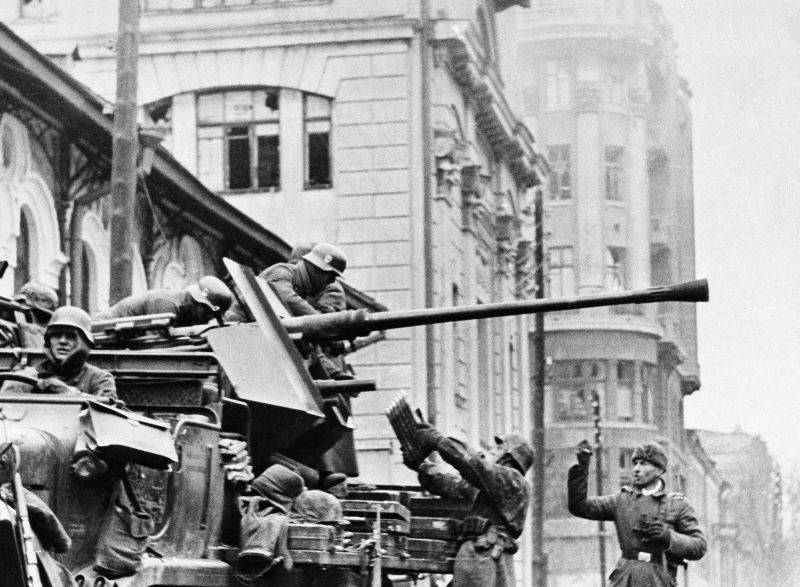
The crew of the German ZSU Sd.Kfz.7 / 2 is preparing for battle in Rostov-on-Don
The Germans were opposed by the 9th Army of General Kharitonov, which took up defenses in an area 87 km wide along the line Dmitrievka, Kuibyshevo, Novo-Spasovka, Kryukovka, the eastern bank of the river. Tuzlov to Stoyanov. The 9th Army included the 30th, 150th, 339th, 136th Infantry and 66th Cavalry Divisions, the Novocherkassk Cavalry School, the 2nd and 132nd Tank Brigades (38 tanks in total). The basis of the defense was formed by battalion areas located on river banks, heights, communication centers, approaches to settlements, and the most tank-accessible directions. In the main defense zone, 7-8 km deep, 27 battalion districts were created.
Rostov was directly defended by the Separate 56th Army of Remezov, created on the basis of the troops of the North Caucasian Military District. In mid-November 1941, the army included 5 rifle divisions, 4 cavalry divisions, the Rostov Artillery School, the 6th Tank Brigade (more than 100 tanks). Remezov's army was supposed to hold back the enemy's onslaught, cover the concentration of the front's shock grouping, and prevent the Germans from capturing Rostov and the bridgehead on the southern bank of the Don.
In the meantime, the Soviet command was preparing an offensive operation with the aim of defeating the 1st tank army of the enemy and preventing the breakthrough of the Germans into the Caucasus. The offensive of the enemy army created a favorable situation for an attack on the flank and rear of the enemy in the northern sector of the front. The 37th Army under the command of Lopatin was created from the divisions of the Southwestern and Southern fronts withdrawn to the reserve in the Kamensk region. The 37th Army included 6 rifle divisions. Lopatin's army was supposed to be ready for the task on November 15, 1941.
9th Army holds the blow
By October 27, 1941, the mobile formations of the Germans completed their concentration in front of the leading edge of the 9th Army. On October 29, the Germans started a battle with units of the 30th rifle division of Goncharov. By the end of the 29th, the Nazis broke through the advanced defense of the division and captured Kuibyshevo. Our troops withdrew to the main position. October 30 - November 1, the German 16th Panzer Division of Hube continued the offensive and advanced 7 km, reached the second line of defense, creating conditions for a breakthrough of the main army forces.
On November 5, 1941, the attack group of the 1st Panzer Army began the offensive - the 16th and 14th Panzer Divisions, the 5th Viking Motorized Division, one regiment of the 60th Motorized Division. Using their advantage in forces, the Germans broke through the front on the adjacent flanks of the 136th and 150th Infantry Divisions and advanced 17 km. However, breaking through the defenses of the Soviet troops, the Germans suffered significant losses. The battle took on a stubborn character. By order of the front command, the headquarters of the 9th Army formed a strike group and launched a counterstrike at the wedged enemy.
The Germans, having an advantage in the mobility of the troops, outflanked the 136th division, the 150th division was surrounded. By the evening of November 6, the German army advanced another 6 km. Commander Kharitonov decides to withdraw the army to the rear line of defense. On the second line of defense, the withdrawal of the army was covered by units of the 136th division and the 132nd tank brigade, which relied on anti-tank defenses in the Dyakovo area. Until November 9, they repelled the attacks of the German 1st Mountain Rifle and Slovak divisions. Further attempts by the Germans to break through the defenses of the 9th Army were unsuccessful.
Thus, the breakthrough of the 1st Panzer Army in the direction of Shakhty and Novocherkassk failed. In the course of heavy battles and significant losses, the Nazis were able to push the divisions of the 9th Army 35-40 km to the east. But they could not develop tactical success into an operational one. On November 11-16, German divisions advanced another 25 km in the Novocherkassk direction, 15 km in the Shakhty direction, and 10 km in Krasny Sulin. The German 13th Panzer Division, which was delivering an auxiliary blow to Rostov, did not advance at all. On the northern flank of the offensive, in the sector of the Soviet 18th Army, German infantry divisions in 12 battles advanced only 2-10 km.
In the Voroshilovgrad direction, the German 17th Army (4th Army Corps) struck from the Bakhmutka River along the right bank of the river. North. Donets in the general direction to Voroshilovgrad. The Germans wedged 20 km into our defenses in the Artemovsk region. Soviet troops with stubborn defense and counterattacks held back the enemy's onslaught, although the Germans were still able to advance 35 km east. The 12th Army's front was not broken through.
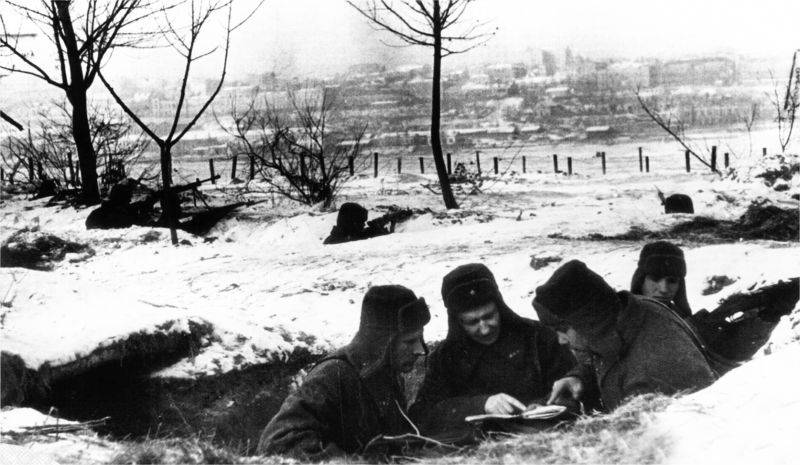
The positions of the Soviet infantry on the outskirts of Rostov-on-Don. 1941 g.
The fall of Rostov
The German command had to abandon a long-range offensive in this direction. The Germans quickly regrouped their forces directly on the Rostov sector, against the 56th Army. The 13th and 14th tank divisions, the 60th motorized division and the SS Adolf Hitler motorized division were aimed at the Rostov direction. The 1st Panzer Army was to take Rostov-on-Don from the northwest. On November 17, 1941, the Germans attacked Rostov.
At the same time, the strike group of the Law Firm, as part of the 37th Army, launched a counteroffensive on the northern flank of Kleist's army. But the German command at first underestimated the enemy and continued the offensive on Rostov. The Germans believed that they would quickly wear down the Soviet troops, and the offensive would stall.
Remezov's 56th Separate Army defended itself in a 75 km wide strip. One division defended a 10-16-kilometer section of the front. However, the line of defense was not prepared in engineering terms. Some divisions were understaffed. The main attack of the enemy was expected on the left flank of the army, where the 343rd and 353rd rifle divisions were stationed. The Germans dealt the main blow on the right flank of the Soviet army, where the guard detachments and the 317th Infantry Division were located. The second echelon housed the weak 31st Infantry Division and the 6th Tank Brigade, which were planned to be used for counterattacks.
On the morning of November 17, German troops delivered the main blow to Generalskoe and Bolshiye Sala. The Nazis quickly hacked into the defenses of Seredkin's 317th Division. Despite the resistance of the brought up units of the 353rd division and the tank brigade, on the second day of the offensive, the Germans expanded and deepened the breakthrough, occupied the Red Crimea. The 31st division, which was on the defensive in an open area, could not stop the enemy's breakthrough. On November 19, German tanks broke through to the northeastern outskirts of Rostov, into the rear of the 56th Army.
Remezov's army received an order to retreat to the line of the Rostov defense region. On November 20, Headquarters ordered Remezov:
On November 20, stubborn battles were fought on the near approaches to Rostov and its outskirts. German attacks were repulsed by units of the 343rd, 353rd and 31st rifle divisions, the 230th NKVD regiment and the 347th rifle division, which had been moved from the reserve to the northwestern outskirts of the city. The Soviet army suffered heavy losses in personnel and materiel, a lot of artillery, tanks and 3 armored trains were lost. The position of our troops was extremely difficult, the battles were already fought in the city, especially stubborn ones - in the area of the Green Island, where the Germans tried to seize the crossings. On the night of November 21, an order was given to withdraw to the left bank of the Don.
Meanwhile, Soviet troops were able to develop an offensive on the northern wing of the 1st Panzer Army, in the Bolshekrepin direction, hanging over the flank and rear of the German strike group in the Rostov area. Therefore, the Germans could not cross the Don on the move and develop an offensive in the Caucasus. German troops went over to the defense with a front to the north, east and south.
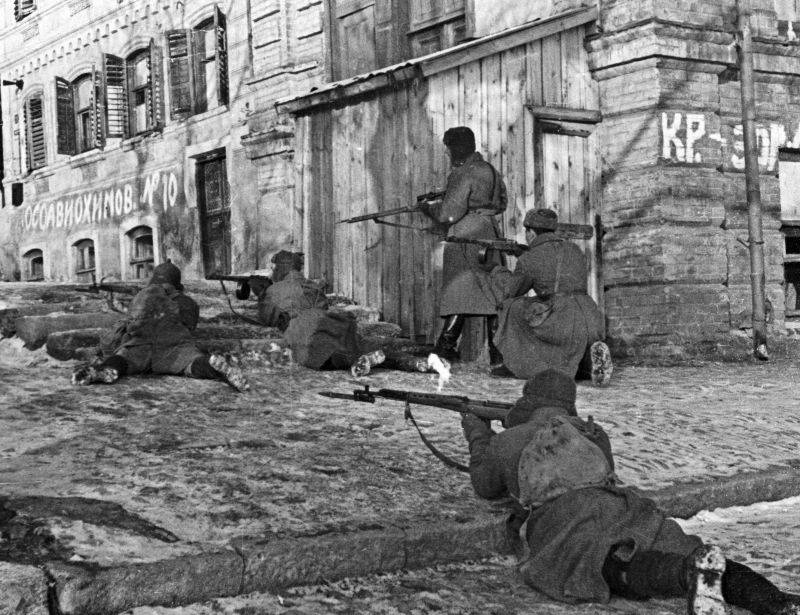
Red Army soldiers waiting for the enemy at the intersection of Osoaviakhim Avenue (modern Chekhov Avenue) and Krasnykh Zor Street in Rostov-on-Don. November 27, 1941
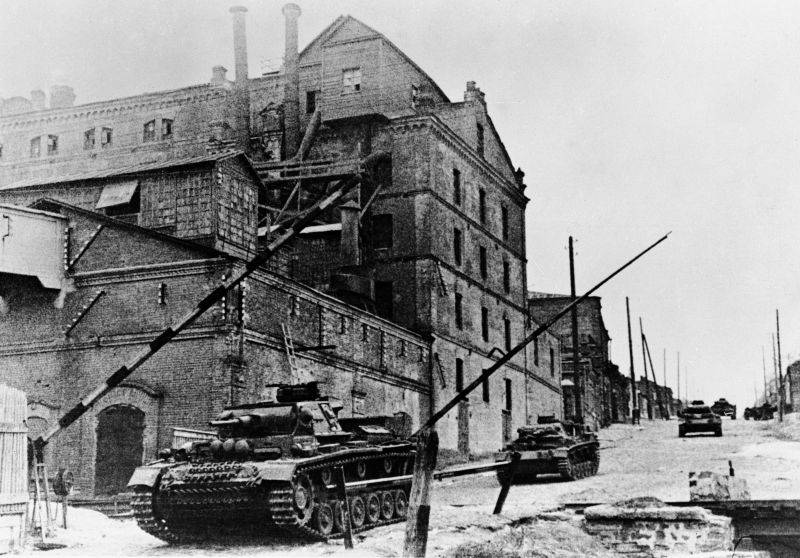
German tanks Pz.Kpfw. III move along the 29th line near mill No. 3 of the Glavmuk trust in Rostov-on-Don. November 1941
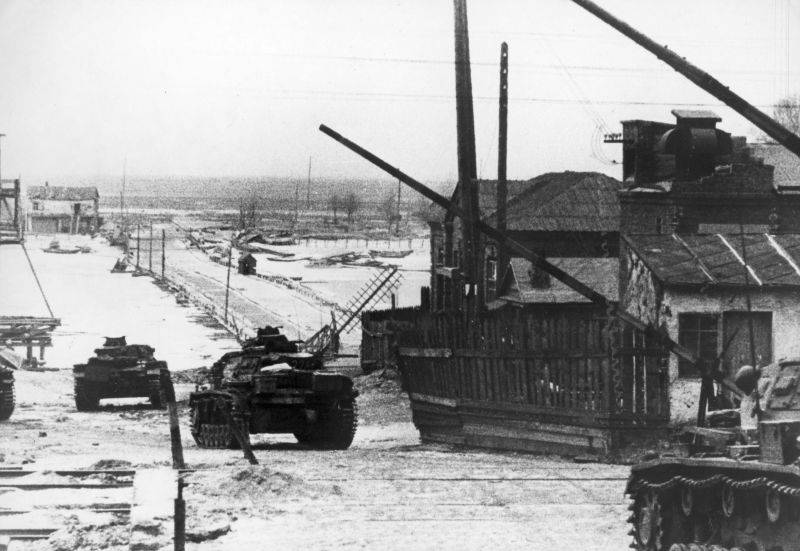
German tanks Pz.Kpfw. III move along the street 29th Line in Rostov-on-Don. The frame shows the pontoon bridge leading to Zeleny Island. November 1941
37 Army Offensive
While the troops of the 9th and 56th armies were fighting in the Shakhty and Rostov directions, the Soviet command prepared a counteroffensive.
The troops of the newly formed 37th Army of Lopatin were to defeat the enemy in the Astakhovo, Millerovo, Agrafenovka area and reach the line of the r. Tuzlov, at the second stage - to the r. Mius. The offensive used parts of the forces of the 18th and 9th armies, a cavalry corps (2 divisions). Our troops were supposed to bridge the gap between the 18th and 9th armies, which created a danger for the enemy to break through into the Shakhty industrial region and the most important railway Rostov-Voronezh, and strengthen the position of Rostov.
By the end of November 16, 1941, 4 rifle divisions and 2 tank brigades (92 tanks) were concentrated in the initial area for the offensive. On the 17th, after a 30-minute artillery barrage, Soviet troops launched an offensive in the general direction of Bolshekrepinskaya. By evening, our troops, pushing the advanced enemy units, advanced 16-18 km.
But then the 37th Army faced strong resistance from the Viking motorized division and part of the 16th Panzer Division of the Germans. The Nazis skillfully defended themselves and counterattacked. In four days, our troops advanced 18–20 km. Due to bad weather conditions, the Soviet aviation she could not provide active support at this time. On the left flank of the offensive, the 9th Army did not achieve much success, as did the 18th Army on the right flank, meeting strong resistance from the German 49th Mountain Corps.
As a result, at the beginning of the operation, the 37th Army was unable to penetrate the enemy's defenses and only pressed against him. Affected by haste during the preparation of the operation, the lack of mobile units, command errors, poor interaction of the infantry with tanks, artillery and aviation. By November 21, Soviet troops reached the Tsimlyanka, Millerovo and Agrafenovka line. Therefore, the German command at first was not particularly worried about the Soviet counterstrike. He believed that he would be stopped by the available forces, without regrouping the tank army.
Only the introduction of the cavalry corps of General Khorun into battle, reinforced by a tank brigade and an NKVD brigade, and the improvement of the weather, which led to the activation of the Soviet Air Force, led to a turning point in the battle.
The strike group of the Law Firm was able to break the defense of the 16th tank, motorized and 1st mountain rifle divisions and on November 22-23 reached the line of the r. Tuzlov.
Thus, the Rostov group of the Wehrmacht faced the threat of encirclement.
The German command begins to transfer parts of the 13th and 14th tank divisions, heavy artillery to the northern flank, and a Slovak division is sent from the reserve to battle. Only the Adolf Hitler division and a reserve training regiment were left in Rostov. The commander of the 1st Panzer Army, Kleist, covering the most dangerous areas with mobile formations, began to withdraw all other troops.
Soviet intelligence did not detect the withdrawal of enemy tank divisions from Rostov in time. The command of the Law Firm planned to destroy the main forces of the 1st Tank Army in the Rostov region. The commander of the Law Firm decided to first recapture Rostov, and then begin an offensive on the river. Mius and Taganrog. Several days were spent regrouping the front forces. The main forces of the 37th Army and the cavalry corps castled to the left.
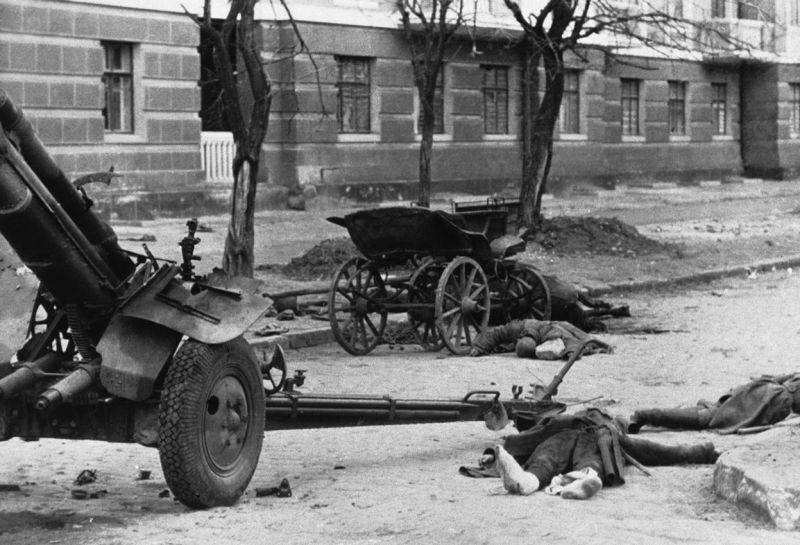
The killed Red Army soldiers at the broken Soviet 76-mm gun of the 1939 F-22 USV model in Rostov-on-Don. November 1941
Liberation of Rostov
On November 24, 1941, the Soviet Headquarters set the task of defeating the Rostov group of the Wehrmacht and liberating Rostov. The 9th and 37th armies were advancing from the north, and the 56th Separate Army from the southeast. In the army of Remezov, two groups were formed - eastern and western. The eastern one was headed by General Grechkin, it included the 353rd Infantry, 64th Cavalry Divisions. The group attacked Bolshoi Log, Ordzhonikidze was supposed to break through to the eastern outskirts of Rostov. General Kozlov's group included the 31st rifle, 62nd and 70th cavalry divisions, two rifle brigades. Kozlov's group stormed the western part of the city. Parts of the 343rd and 347th rifle divisions, the Rostov regiment of the people's militia also took part in the attack.
The assault was difficult.
The city was located on the dominant right bank of the Don. The Germans could view and shoot through the battle formations of our divisions to the full depth. The situation was especially difficult on the left flank of the 56th Army, where the river valley and floodplains were completely open to the enemy. The Germans, on the other hand, had the opportunity to place firing positions in convenient places and heights, including dug-in tanks, and equip stone buildings for defense. In addition, the ice on the Don was still thin, which excluded the use of heavy weapons by our troops.
The assault began in the early morning of November 27. The 31st division, which was advancing under enemy fire through open terrain and floodplains, with difficulty and heavy losses reached the Don. On the ice, the Germans fired at our soldiers from machine guns, mortars and tank guns. Therefore, the division was able to break through to the other side only on the night of November 29. Our troops began a battle for the western part of the city, intercepted the Rostov-Taganrog road. At the same time, units of the 9th Army entered Rostov from the north and north-east. Under the threat of encirclement, the Germans began to withdraw.
The main role in the liberation of Rostov was played by the troops of the 347th and 343rd rifle divisions of Davidovsky and Chuvashev with the 230th NKVD regiment Demina attached to them and the Rostov rifle regiment of Varfolomeev's militia. They were able to break through under enemy fire across the Don. In the vanguard, NKVD fighters and militias were advancing, they were the first to break into the city. During three days of fierce fighting, our troops liberated Rostov on November 29.
Meanwhile, the divisions of the 37th army, developing an offensive to the west, crossed Tuzla on the 27th. On December 2, the advanced units of the Soviet army reached the river. Mius. It was not possible to surround at least part of the German Rostov grouping. The Germans, hiding behind strong rearguards, Luftwaffe strikes and using the advantage in mobility, successfully retreated to the Mius line and established themselves there. In addition, the Soviet strike group did not have powerful armored formations to build on the success. The Germans repelled the attempt of the 37th Army to develop an offensive on Taganrog. To strengthen the position of the 1st Panzer Army, the command of Army Group South transferred 4 divisions from Kharkov.
The front has stabilized.
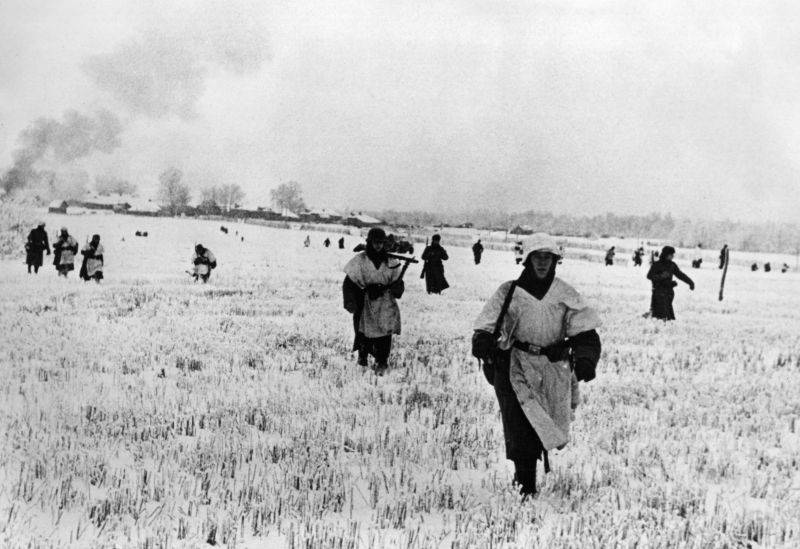
German infantry on the outskirts of Rostov
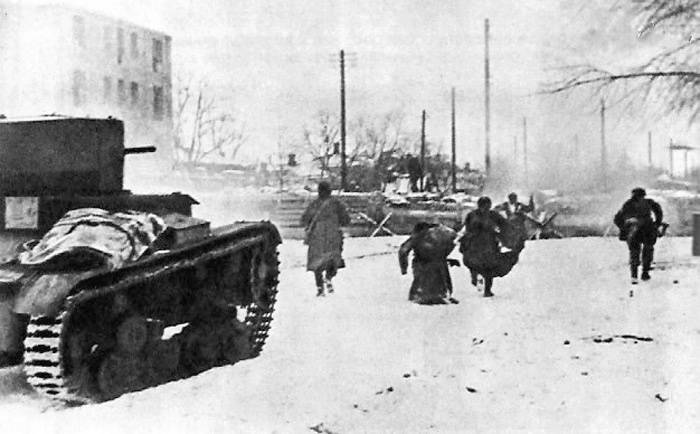
56th Army in the battles for Rostov
Results
Thus, our troops recaptured Rostov, did not allow the enemy to break through to the Caucasus.
True, due to the slow advance of the JF strike group, the absence of a strong armored group in the second echelon and reserve, and command errors, the motorized corps of the enemy's 1st tank army were not surrounded and destroyed.
However, Army Group South suffered heavy casualties. The commander of Army Group South, Rundstedt, unauthorizedly withdrew his troops to the Mius River, 70 km west of Rostov. Hitler removed him from command and replaced him with Reichenau. Together with the victory near Moscow, which buried the German Typhoon (How Operation Typhoon failed), The Rostov operation finally defeated the German blitzkrieg strategy.
The southward front stabilized for a long time.
The resources of Army Group South were shackled and depleted, which did not allow the German High Command to transfer divisions from the south to the Moscow direction. This helped to defend Moscow in November and conduct a successful counteroffensive in the main (central) strategic direction in December 1941.
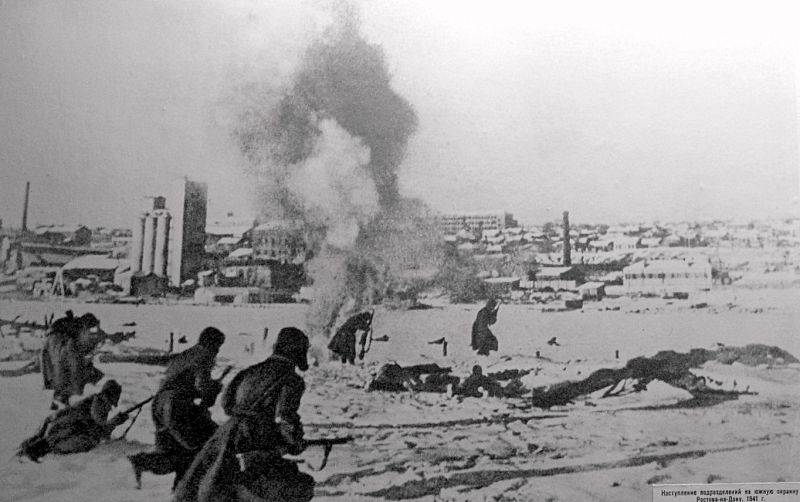
“The battle for the southern outskirts of Rostov-on-Don. 1941 g. " - photo signature in the exposition of the Museum of Artillery, Engineering Troops and Signal Troops of the RF Ministry of Defense in the city of St. Petersburg
- Alexander Samsonov
- https://ru.wikipedia.org/, http://waralbum.ru/, https://dic.academic.ru/
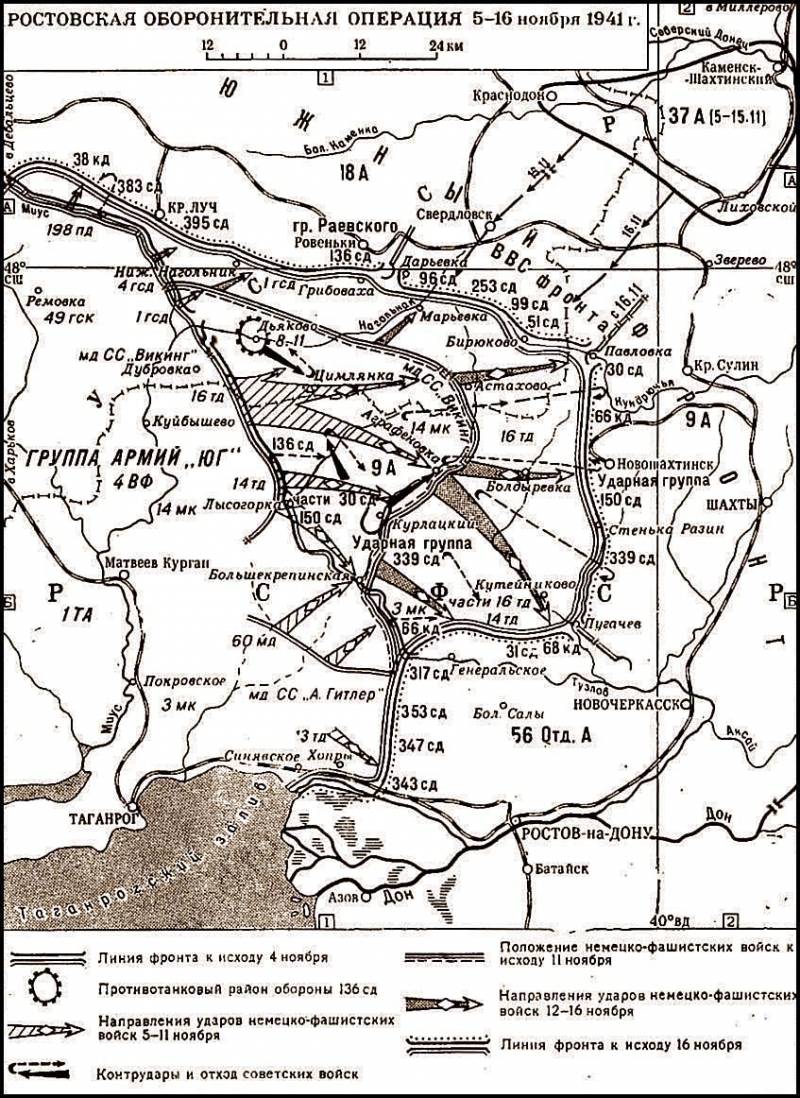
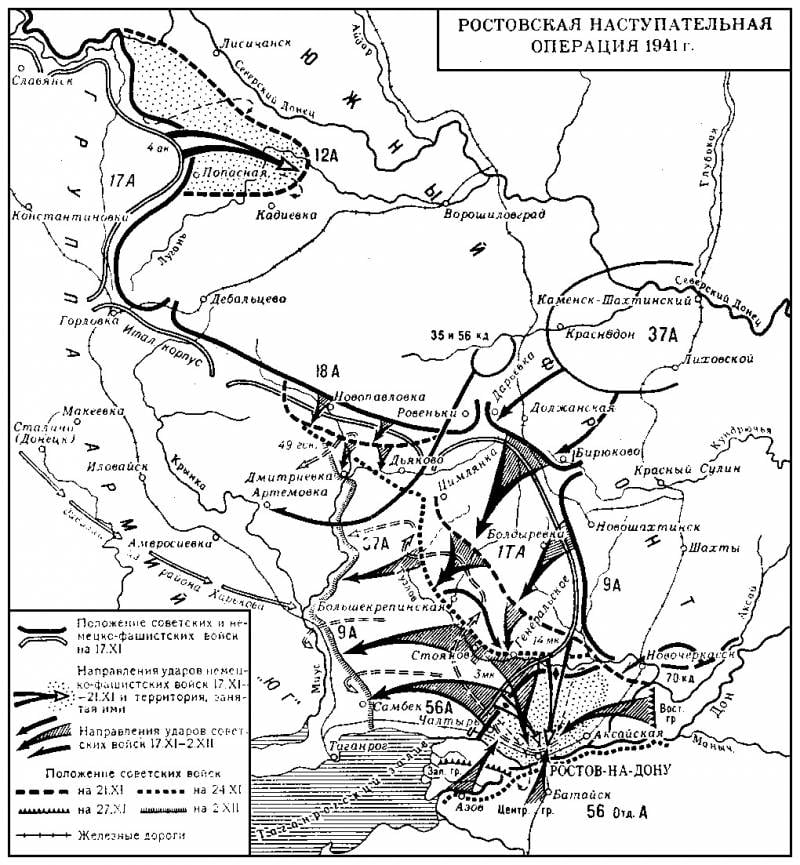
Information